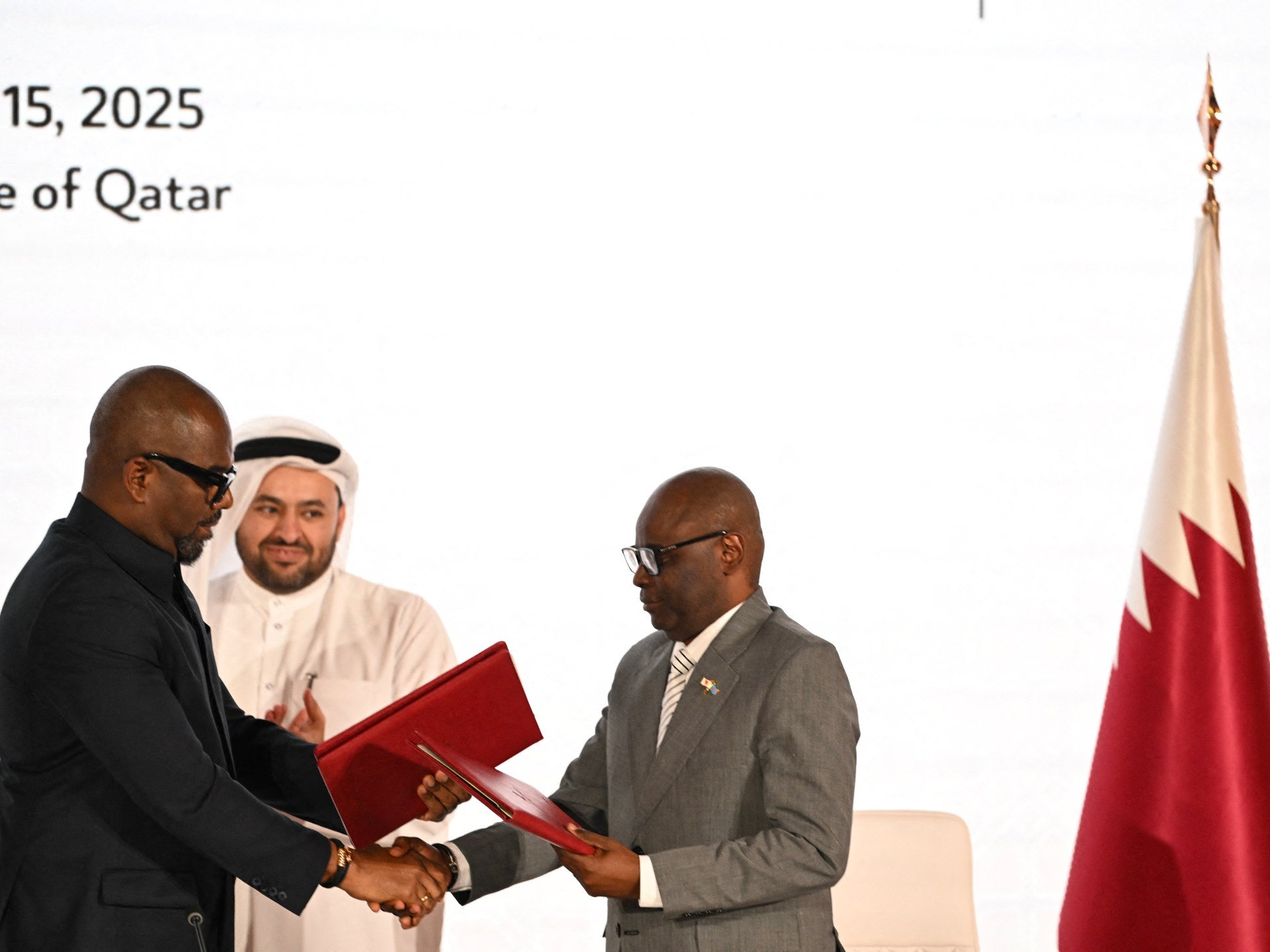After so many images of death and devastation, what sweet relief to see pictures of joy. On the world’s TV news broadcasts, the screen was split on Thursday: celebrations in Gaza and celebrations in Israel, the scenes of cheering and clapping mirroring each other, as if to confirm that this was a war the peoples themselves wanted over long ago – and which most never wanted to begin.
The images were not unfamiliar. We had seen a version of them in January, when a ceasefire was announced to great jubilation. That held only until mid-March, when Israel broke the agreement and resumed its bombardment of Gaza, an experience that should temper, and caveat, the current hope with the knowledge that things can unravel at any moment. Still, this time, even the region’s most seasoned pessimists concede, the deal looks more durable.
So how did it come about and who deserves the credit? Often a breakthrough such as this is the result of both parties shifting their positions, more or less equally. At first glance, it can seem as if that is what happened here. Hamas was clearly weakened, with Israel having eliminated its leaders and diminished its great patron, Iran. And Donald Trump ensured that those states with leverage over Hamas – Qatar, Turkey and Egypt – pushed the organisation to say yes. (He did that using tools uniquely held by the US, agreeing, for example, a defence pact with Qatar that gives the Gulf state Nato-level protection.)
Even so, and despite the best efforts of Benjamin Netanyahu’s advocates to suggest otherwise, Hamas was not forced to make a major shift in its stance. Trump’s 20-point plan might call for the group to hand over its weapons, but Hamas has made no commitment on that and there is no mention of it in the current, fairly narrow ceasefire agreement billed as the first phase of the deal.
From the start, the group said it would hand over the hostages it held once Israel agreed to release Palestinian prisoners, eventually withdraw its forces from Gaza and end the war. Sure, the withdrawal will be done in stages, but those three moves are what Israel has broadly agreed to. As Michael Milstein, a former colonel in Israeli military intelligence widely regarded as the country’s foremost analyst of Hamas, put it to me when we spoke: “Let’s face it, Hamas didn’t really change anything dramatically in its basic positions.”
In other words, the big shift has been in the Israeli stance. Just a few days before Trump unveiled his plan at the White House with Netanyahu at his side, the Israeli prime minister was telling the UN in New York that the war would not end until Hamas was entirely destroyed. Now he has agreed to a deal that leaves Hamas in place. He has accepted what he had previously deemed unacceptable. What got him to do that?
The concise answer is that Donald Trump at last wielded the full might of his office and called time on the war. He left Netanyahu in no doubt that his patience had run out, confident that the Israeli PM had nowhere else to turn. Over the past two years, Netanyahu has shown the middle finger to everyone else – including Israel’s historic friends and allies – leaving him dependent on Trump alone. If the US president said the war had to end, it had to end. As Trump himself told Netanyahu: “Israel cannot fight the world.”
Most observers suspect that Trump decided to put his foot down after Israel’s 9 September failed attack on the Hamas negotiating team in Doha. Trump took that as a personal affront. Not only did Netanyahu give him insufficient warning that Israel was planning to kill the very people with whom it needed to discuss an agreement, he did it on the sovereign territory of a country with which Trump has personal and financial ties: recall that the Qataris had gifted Trump a new plane to use as Air Force One. It was an act of hubris by Netanyahu. And, like a mafia don insulted by an attempted hit on one of his business associates, Trump decided it was time to remind the Israeli PM who was boss.
The US president also noted the loud protests on Israeli streets, as the public there demanded an end to the war, and the global outrage caused by Israel’s shattering of Gaza, and calculated that brokering a ceasefire deal would bring him the kudos that, though he often affects to disdain international opinion, he craves. To say nothing of the Nobel peace prize, which he covets as the one priceless bauble that has so far eluded him. Such is the power of a US president that, once he decided to use it, the pieces swiftly fell into place.
Does that, then, make Donald Trump the hero of this hour? Those of us who have opposed him with such vehemence this past decade should swallow hard and give credit where it is due. His willingness to bully and twist arms, his command of global attention, his force of personality were all deployed, on this occasion, towards a noble goal: to stop the killing and to free the hostages.
But any admiration has to be qualified by a single, hard fact. Trump could have done this so much earlier. When he returned to the White House on 20 January, a ceasefire deal not too different from this one was in place. When Netanyahu moved to break that ceasefire in March, Trump could have slammed his foot down then and said no. Instead, he gave him a green light – and what followed was, in many ways, the worst six months of the war. Trump had the power to stop it – and he chose not to.
Of course, this same critique applies in spades to Netanyahu himself. Indeed, the offence is worse because a deal broadly similar to the one he agreed this week was on offer as early as June 2024. But he refused it, and others like it that followed, deciding at each turn that his personal and political interests were best served by ongoing war. True, Joe Biden deserves blame for not using US power to demand a halt (though his situation was harder than his successor’s, if only because Donald Trump does not have a Donald Trump in the wings, seemingly promising Netanyahu better terms). But Netanyahu’s culpability runs deep.
after newsletter promotion
Even if you only go back to the opportunity forsaken in March, just think of all that was lost. The Palestinian lives destroyed in Gaza since then; the hunger as Israel shut off aid. And from Israel’s own point of view: the hostages forced to endure seven months more in captivity; the soldiers killed in action; the demolition of Israel’s standing, especially over aid, turning the country into a global pariah. “It’s really a catastrophe,” says Milstein, “because it seems we made a very long voyage only to find ourselves once again at exactly the same point.” You can pass a similarly damning judgment on Hamas: it could have ended Gaza’s agony so much earlier by releasing all the hostages.
As it turns out, Trump did not get his Nobel – not this year, at any rate. If he really wants it, it’s clear what he has to do. He has to stay as engaged over the coming months and years as he has been these past 10 days. Every one of his plan’s 20 points contains enough unresolved tensions to bring the entire thing crashing down.
Above all, he has to stay on Netanyahu’s case, alert to the danger that Netanyahu will bank what has been agreed and never move on to what is meant to come next. Note the Netanyahu ally who starkly declared: “There’s no phase two.” Trump cannot tolerate that. He has to maintain the pressure, preventing Netanyahu from playing any of his usual games. If Trump really wants the prize of peace, there is no other way.
-
Jonathan Freedland is a Guardian columnist. His new nonfiction book, The Traitors Circle: The Rebels Against the Nazis and the Spy Who Betrayed Them (£25), is available from the Guardian Bookshop at £22
-
Do you have an opinion on the issues raised in this article? If you would like to submit a response of up to 300 words by email to be considered for publication in our letters section, please click here.


